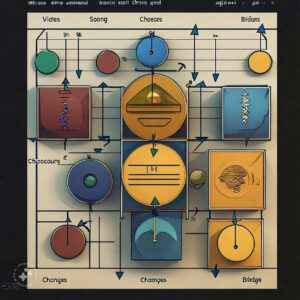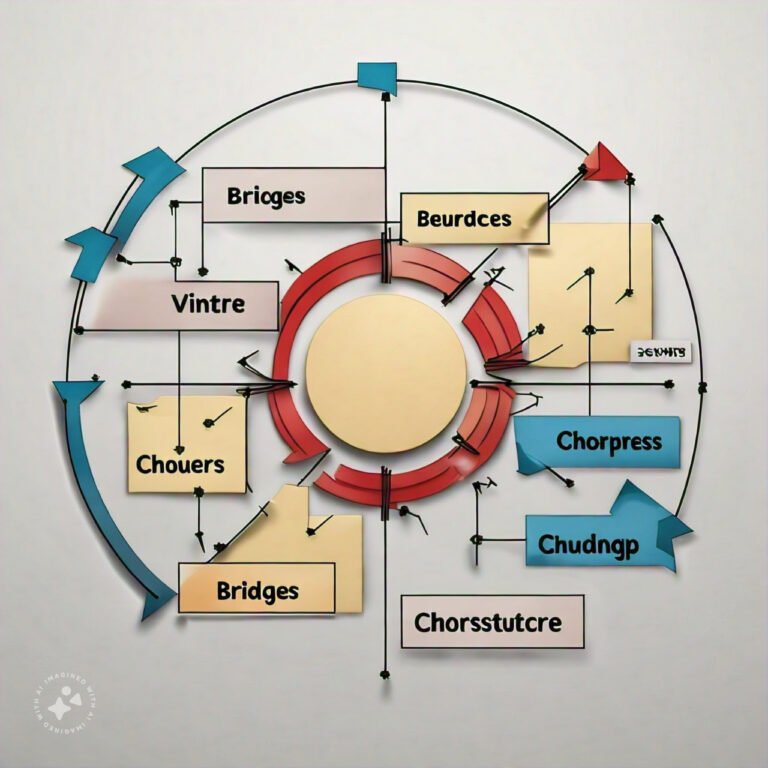Here in this blog post, we are going to tell you how to write a song with multiple verses in a professional way, so if you were looking for a way to write multiple verses for your song this blog post is for you.
Have you ever been captivated by a song that unfolds like a captivating story, each verse revealing a new layer of emotion or insight? Or maybe you’ve struggled to maintain momentum and interest across multiple verses in your songwriting? The art of crafting a song with multiple verses is a delicate dance between storytelling, lyrical finesse, and musical ingenuity.
In this comprehensive guide, we’ll delve into the intricacies of multi-verse songwriting, offering practical tips and tricks honed from years of experience in the music industry. Whether you’re a budding songwriter or a seasoned professional, these insights will help you elevate your craft and create songs that resonate deeply with your listeners.
The Importance of Multiple Verses
- Depth: Multiple verses allow you to explore different themes, emotions, and ideas, adding depth to your song.
- Variety: Each verse can have its unique tone, pace, and style, keeping your listeners engaged.
- Storytelling: Multiple verses enable you to tell a story that unfolds, creating a sense of anticipation and curiosity.
1. Understanding the Structure of Multiple Verse Songs (Laying the Foundation)
Before we embark on our journey, let’s establish a clear understanding of the typical structure of a multi-verse song. While variations abound, most songs with multiple verses follow a general pattern:
- Verse: The verses serve as the primary storytelling vehicle, introducing characters, setting the scene, and unfolding the narrative. Each verse typically presents a new piece of the puzzle, contributing to the overall picture.
- Chorus: The chorus is the heart of the song, containing the central message or theme. It’s usually the most memorable and catchy part, often repeated throughout the song.
- Bridge: The bridge offers a contrasting section, providing a change in melody, harmony, or lyrical content. It often serves as a turning point in the narrative or emotional arc of the song.
In the context of multi-verse songs, each verse plays a crucial role in building the narrative, developing characters, and creating emotional depth. Let’s explore how to master this art.
2. Crafting a Compelling Story Across Verses:
Think of your song as a miniature story with a beginning, middle, and end. Each verse acts as a chapter, propelling the narrative forward and revealing new facets of the story.
Here are some key considerations for building a compelling narrative across multiple verses:
- Establish a Clear Premise: What’s the central idea or conflict at the heart of your song? Introduce it early in the first verse to set the stage for what’s to come.
- Develop Characters and Relationships: If your song involves characters, use each verse to deepen their portrayal and explore their relationships with each other and the world around them.
- Create Emotional Tension and Release: A captivating story often involves a build-up of tension, followed by a release or resolution. Use your verses to create anticipation and deliver a satisfying payoff in the chorus or bridge.
- Leave Room for Interpretation: While providing enough detail to engage the listener, avoid being overly explicit. Allow space for the audience to connect with the song personally and draw their own conclusions.
Remember, a well-crafted narrative can transform a simple song into a captivating journey for your listeners.
3. Maintaining Lyrical Consistency and Flow:
Imagine reading a book where each chapter feels disjointed and disconnected. It would be a frustrating and confusing experience. The same principle applies to songwriting.

To ensure a smooth and enjoyable listening experience, strive for lyrical consistency and seamless transitions between verses. Here’s how:
- Establish a Consistent Voice and Perspective: Decide on a narrative voice (first-person, third-person, etc.) and perspective (character’s viewpoint, observer’s viewpoint, etc.) and maintain it consistently throughout the song.
- Use Linking Words and Phrases: Connect verses with transitional words or phrases that create a sense of continuity. For example, you could use “then,” “but,” “meanwhile,” or “suddenly” to signal a shift in time, perspective, or action.
- Employ Parallelism and Repetition: Repeat certain phrases or sentence structures across verses to create a sense of cohesion and reinforce key themes.
- Vary Sentence Length and Structure: While maintaining consistency, introduce some variety in sentence length and structure to avoid monotony and keep the listener engaged.
Remember, the goal is to create a seamless flow of ideas and emotions, allowing the listener to immerse themselves fully in the song’s world.
4. Varying Your Rhyme Schemes and Rhythms (Avoiding Monotony):
Repetition is a powerful tool in songwriting, but too much of it can lead to monotony and predictability. Experiment with different rhyme schemes and rhythmic patterns in each verse to keep your listeners on their toes.
Here are some ideas to spark your creativity:
- Rhyme Scheme Variations: Alternate between traditional rhyme schemes (AABB, ABAB, etc.) and more unconventional ones (ABCB, ABAC, etc.). You could even try internal rhymes or slant rhymes to add subtle complexity.
- Rhythmic Exploration: Play with different rhythmic patterns within each verse. You could use syncopation, triplets, or other rhythmic devices to create contrast and dynamism.
- Melodic Diversity: While maintaining a cohesive overall melody, introduce subtle variations in each verse to avoid repetition and keep the listener engaged.
Remember, variety is the spice of life (and songwriting!). Don’t be afraid to step outside your comfort zone and explore new possibilities.
5. Creating Memorable Hooks within Each Verse:
In a multi-verse song, it’s essential to keep the listener engaged throughout. One way to achieve this is by incorporating catchy hooks or memorable phrases within each verse.
Here are some tips for crafting effective hooks:
- Use Vivid Imagery and Metaphors: Paint a picture with your words, creating images that stick in the listener’s mind.
- Employ Wordplay and Puns: Clever wordplay can add a touch of humor or wit to your verses, making them more memorable.
- Craft Melodic Hooks: A catchy melody within a verse can be just as effective as a lyrical hook. Experiment with different melodic ideas and see what resonates.
- Place Hooks Strategically: Consider placing hooks at the beginning or end of each verse for maximum impact.
Remember, a well-placed hook can elevate a verse from forgettable to unforgettable.
6. Utilizing Repetition and Variation Strategically (Balancing Familiarity and Novelty):
As mentioned earlier, repetition is a powerful tool in songwriting, but it needs to be balanced with variation to avoid predictability.
Here’s how to strike the right balance:
- Repeat Key Phrases or Melodies: Identify the most impactful phrases or melodies in your song and repeat them strategically throughout the verses. This creates a sense of familiarity and reinforces key themes.
- Introduce Variations: While repeating certain elements, introduce subtle variations in each repetition. This could involve changing a word or two, altering the melody slightly, or adding a new instrumental layer.
- Build Intensity Gradually: Use repetition and variation to build intensity and momentum throughout the song. Start with a simple idea and gradually add layers of complexity and variation as the song progresses.
Remember, the key is to find the sweet spot between familiarity and novelty, creating a listening experience that’s both comforting and surprising.
7. Developing Character and Perspective Shifts:
Multi-verse songs offer a unique opportunity to explore different characters or perspectives within the narrative. This can add depth and complexity to your songwriting, allowing you to tackle themes from multiple angles.
Here are some strategies for developing character and perspective shifts:
- Use Different Pronouns: Shift between first-person (“I,” “me,” “my”) and third-person (“he,” “she,” “they”) narration to explore different viewpoints.
- Vary Vocal Delivery: If you’re the singer, experiment with different vocal styles or inflections to distinguish between characters or perspectives.
- Change Musical Style: Introduce subtle changes in instrumentation, tempo, or key to reflect shifts in character or mood.
- Contrast Lyrical Themes: Explore contrasting emotions or ideas in different verses to create a sense of dynamism and conflict.
Remember, character and perspective shifts can add a layer of richness and nuance to your songwriting, making it more engaging and thought-provoking.
8. Experimenting with Different Verse Lengths and Structures:
While traditional verse structures (four lines, eight bars, etc.) are common, don’t be afraid to experiment with different lengths and structures. This can lead to unique and memorable songs that stand out from the crowd.
Here are some ideas to spark your creativity:
- Vary the Number of Lines: Try writing verses with three lines, five lines, or even seven lines. This can create a sense of asymmetry and unpredictability.
- Experiment with Meter: Play with different metrical patterns (iambic pentameter, trochaic tetrameter, etc.) to create unique rhythmic feels.
- Incorporate Spoken Word or Rap: If it fits the style of your song, consider incorporating spoken word or rap sections within your verses. This can add a dynamic element and break up the monotony of traditional singing.
Remember, songwriting is a creative endeavor. Don’t be afraid to break the rules and forge your own path.
9. Polishing Your Lyrics and Melodies:
Once you’ve crafted your multiple verses, it’s time to refine your lyrics and melodies to achieve clarity, emotional impact, and memorability.
- Lyric Editing: Scrutinize each word and phrase, ensuring that they contribute to the overall message and emotional resonance of your song.
- Melody Refinement: Experiment with different melodic variations to find the most compelling and memorable tunes for each verse.
- Seek Feedback: Share your work with trusted friends, fellow musicians, or songwriting mentors to gain valuable insights and constructive criticism.
Remember: Songwriting is a craft that requires constant practice and refinement. Don’t be afraid to revise and rework your lyrics and melodies until you achieve the desired effect.
10. Finding Inspiration and Overcoming Writer’s Block:
Every songwriter experiences moments of creative block. When those moments strike, don’t despair. Instead, try these tips to reignite your inspiration:
- Change Your Environment: Take a walk in nature, visit a museum, or simply relocate to a different room in your house. A change of scenery can often spark new ideas.
- Freewriting: Set a timer for 10-15 minutes and write down whatever comes to mind, without editing or censoring yourself. This can help you break through mental barriers and access your subconscious creativity.
- Consume Inspiring Content: Listen to your favorite music, read poetry, or watch a thought-provoking film. Immersing yourself in art can often trigger your own creative impulses.
- Collaborate: Partner with another songwriter or musician to brainstorm ideas and bounce ideas off each other.
Remember: Inspiration can strike at any moment. Keep a notebook or voice recorder handy to capture fleeting ideas and melodies.
FAQs
How many verses should a song have?
There is no set rule for the number of verses in a song. It depends on the length and complexity of your narrative, the overall structure of your song, and your artistic vision. Some songs may have only two verses, while others may have three, four, or even more.
Should all verses have the same melody?
While it’s common for verses to share a similar melody, introducing variations in each verse can add depth and dynamism to your song. Experiment with subtle changes in pitch, rhythm, or phrasing to keep the listener engaged.
How do I avoid making my verses sound repetitive?
Vary your rhyme schemes, rhythmic patterns, and lyrical content in each verse. Introduce new details, shift perspectives, or deepen the emotional stakes as the song progresses.
Can I use different genres or styles in each verse?
While it’s generally advisable to maintain a consistent style throughout your song, incorporating subtle elements from different genres or styles in each verse can add a unique flavor and showcase your versatility as a songwriter.
How do I know if my multi-verse song is working?
The best way to gauge the effectiveness of your song is to share it with trusted listeners and solicit their feedback. Pay attention to their emotional responses, their ability to follow the narrative, and their overall engagement with the song.
Conclusion
Crafting a song with multiple verses is a rewarding endeavor that allows you to explore the depths of your creativity and storytelling abilities. By mastering the techniques outlined in this guide, you can craft songs that captivate your audience, evoke a range of emotions, and stand the test of time.
Remember, songwriting is a journey of continuous learning and growth. Embrace experimentation, seek inspiration from diverse sources, and never stop refining your craft. With dedication and passion, you can unlock the full potential of multi-verse songwriting and create music that resonates with listeners for years to come.


